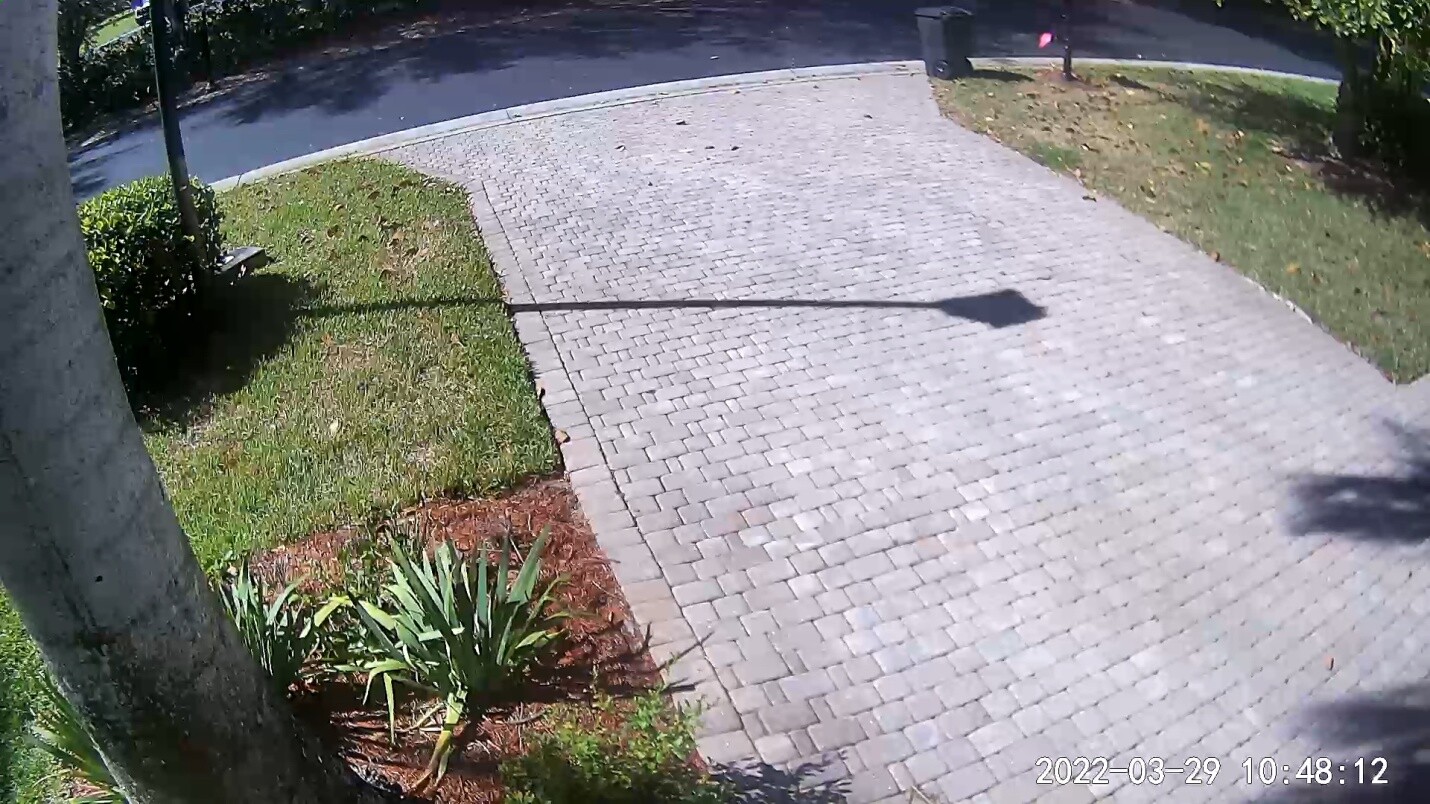Cameras Can Show You What Is Going On

[April 2022] Somehow, it seems that no matter where you are, problems develop somewhere else. It used to be that meant a lot of travel just to determine the problem. Today, we have some tools that make us much more efficient in getting things back to normal. A key tool, as Kevin Trueblood explains, is the use of cameras.
It is no secret being a broadcast engineer requires a variety of skill sets to succeed in the job.
We all wear multiple hats: from electrical and electronic engineer to IT helpdesk responder, plumber, landscaper, or personnel manager – and that can be just in the span of an hour.
A big part of our jobs is in facilities management. We are the ones typically responsible for maintaining the buildings and grounds that produce both our programming and the RF signals. These facilities are spread out over many miles and hours of driving time and typically are unmanned, which means you have to do your best at managing them remotely.
HAVE TOOLS, USE THEM
Having as many tools and resources at your disposal is crucial to effective and efficient management of those facilities.
In recent years, the Internet has become ubiquitous at our facilities, often available through a variety of providers. Among the first things broadcasters used to their advantage were remote control and/or program STLs via the Internet.
But far and away one of the best resources you can have in managing facilities remotely is cameras – especially those now on line and accessible through the Internet.
LOOKING IN FROM AFAR
Cameras are a simple means to put eyes on your remote sites to get a better understanding of what is happening in so many different ways.
For example, the most common use of the cameras I have seen is to train one on the front of a transmitter. If the transmitter trips off you can see what faults or indicators are lit so you quickly can know in most cases why it will not restart upon command.
A CASE STUDY
For my primary TV and FM site, I have installed an NVR system with 13 cameras to give me a full view of the room and the grounds.
Since I first installed a system in 2016 it has proven useful in many different ways.
From confirming false trips of burglar alarms, confirming HVAC systems are running (or not), water leaks, site break-ins, and wildlife sightings it has more than paid for itself in saved trips to understand what was happening and to deploy the right resource to resolve a situation.
GETTING THE RIGHT SYSTEM
These days there are cameras and recording systems for any type of budget. To know which one is the best for your facility let us start with how you would like to view the cameras and what you would like to do with them.
Most cameras and systems have mobile and desktop apps, which makes viewing your sites as simple as opening an app on your phone or your desktop computer. But many of the lower-end cameras are viewable only on a mobile app.
Personally, a mobile app is a must. If I am sitting on the beach on a Sunday afternoon and get a phone call from our burglar alarm system, I want to be able to login and view what is happening without having to dig a laptop out.
One tradeoff to a mobile app is access can be limited to one username and password, so if you would like to share access to those cameras you have to share your credentials with someone else.
BIGGER AND BETTER
The higher end of the camera range are NVR systems, which stands for Network Video Recorder.
These are systems that can have hardwired cameras or can incorporate other cameras available on a local network. These systems can also pull remote video feeds into modern facility monitor systems, video screens, and anywhere else you need a live video feed that can be incorporated over the RTSP standard.
These systems typically work with either a mobile app or desktop video app with multiple users and accounts setup so multiple people can use it without having to share credentials.
Let us go over a few of the popular cameras and systems to give you some ideas of what you can get for your facility.
WYZE USE ON A LOW BUDGET
Wyze cameras are very simple, low cost, and high definition units that sell for just $35 on Amazon.
These cameras are very small and come with a magnetic mount and night vision so it can be ideal to place inside of a transmitter shack. Footage can be saved on a microSD card and you can enable motion detection and facial recognition notifications to serve as a defacto burglar alarm or to let you know if a contractor or other authorized person has arrived at the site.
While the camera itself is not weatherproof, there are a number of kits available online that will house the cameras so you can place them outdoors.
CONSIDERATIONS
The downsides to the Wyze camera are their network connectivity is WiFi only.
Therefore, you would need to set up WiFi wherever you wanted to place them for connectivity. Also, the preferred method of viewing live and archived footage is through their mobile app. And there are ways you can integrate the cameras into an NVR system via an RTSP stream and viewing through a web browser which is under development for an additional monthly fee.
Here is an image taken from a Wyze camera mounted in a weatherproof housing of my driveway in the middle if the day.

THE REOLINK NVR PACKAGE
The system I installed at my primary TV and FM site is a Reolink 16 channel NVR system.
I currently have 13 cameras installed including two incorporated using a WiFi link mounted to a large satellite dish on our property.
As is common with transmitter sites, this system is in a rural location so having a full view of the property is helpful so I know who is coming and going. It is also helpful when I have my staff working on site, as I can provide an extra set of eyes to make sure they are safe and assist if I see anything amiss.
Here is a complete view of our site:

Any one of these cameras can be pulled up into a full screen display at any time. As an example, here is a nighttime view of the entrance to our property.

VERSATILITY ADVANTAGE
One advantage to the Reolink systems is they have a variety of cameras for different purposes such as wide and multiple angles.
They also will incorporate any camera that can generate an RTSP stream (including the Wyze cameras).
Before I used the Reolink system I had an inexpensive Swann system I purchased from Best Buy. That system was limited to four cameras and was based on composite video. It did the job just fine, but did not have the expandability I wanted nor the ability to incorporate network cameras.
NETGEAR ARLO
What I would call a compromise system is the Netgear Arlo.
The primary advantage to this system is the cameras are 100% wireless, so you can put the cameras wherever you would like without needing to run cables. On the other hand, the cameras are all battery powered which could be a problem for an unmanned site.
The good news is the battery life for the cameras are measured in months, which means charging them can be incorporated into your routine visits. Furthermore, they recently have introduced solar panels that can charge any of your outdoor cameras without your intervention.
COST AND OTHER FACTORS
The Reolink system can run upwards of $1,000 for a 16 channel base station and cameras. The Netgear Arlo is a bit cheaper at a few hundred dollars but with fewer cameras. Self-contained cameras like the WYZE are, as noted, as cheap as $35.
No matter which system you choose, I recommend installing as much hard drive storage space as you can into the recording systems. We do not visit the sites as often as we like, so we may not discover vandalism or theft until long after it has happened. Having a long recorded history will allow you to better determine when incidents happen and potentially to find the culprits.
The systems I have listed have expandable memory with options for cloud storage.
Night vision is a standard feature on most every camera but keep in mind their quality may vary greatly. Also, the higher the resolution, the easier it will be to see details and enlarge images which can make a huge difference in identifying suspects involved in a crime. And 4k cameras are readily available if they can be accommodated in your budget.
PART OF A NORMAL PROTOCOL
Checking your site cameras should be part of your regular routine just like reviewing EAS logs.
Also, a s with all Internet-connected gadgets you must be diligent about network security. That means potentially restricting network access for certain devices and be sure to always update the firmware.
No matter which system you choose, having cameras at your sites is something very attainable for most every station. It can be a very handy tool to help reduce the amount of unnecessary trips to your sites and are also invaluable at deterring theft and vandalism as well as a tool to help you solve crimes if they do happen.
To be sure, while cameras are no substitute for a physical site visit they certainly can supplement what may be infrequent visits to catch things well before they become problems.
– – –
Kevin Trueblood is the Associate General Manager for Technology & Operations for WGCU Public Media in Fort Myers, Florida. He can be reached at kevin@neptuneradio.net.
